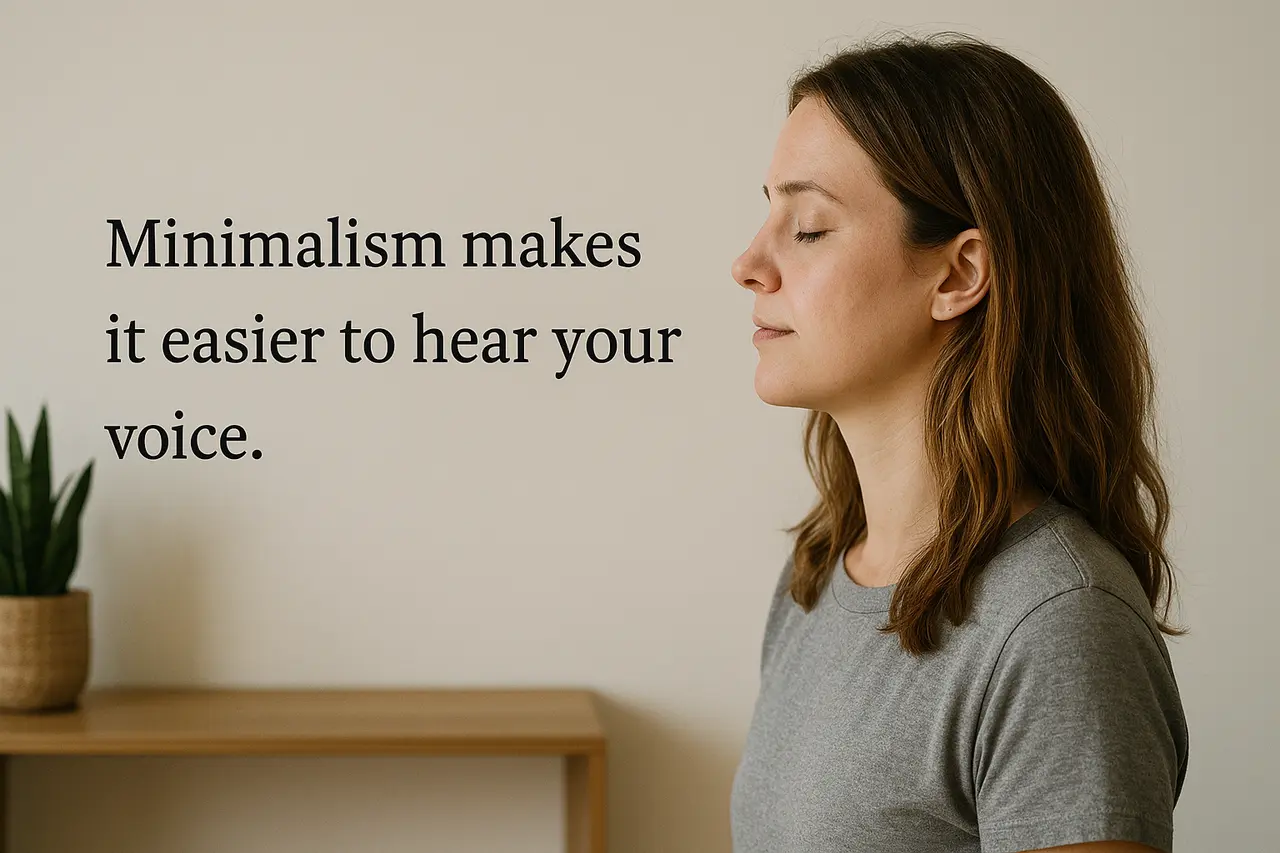Living in Alignment: Discover How to Align Your Life with Your True Values

Living a life in alignment is the most important thing you can do for your well-being. When you live life true to your values, you stop pretending and start living from a place of knowing. You become more present, fulfilled, and able to thrive, even when things don’t go according to plan.
This is not about chasing perfection. It’s about accepting yourself and choosing what makes you more fulfilled daily. Let me walk you through what it means to live in alignment, uncover your true values, and make every choice count.
What Does It Mean to Live in Alignment?
Living in alignment means every part of you points in the same direction. Your thoughts, words, and actions all reflect what you truly value. You stop fighting with yourself. Instead, you embody what matters most.
Spiritual alignment is not a feeling or a place to reach someday. It’s a state of being. Stay connected to your inner voice. Listen. Make choices that match your highest truth. This might sound simple, but it means living authentically, no matter what others think.
I often think of this as connecting to something greater, whether Universal Energy, Source, Higher Self, God, or the Divine. When I do this, I feel supported. I act with ease and clarity.
Life flows better because I am not split inside. I make choices from my true self, not from outside pressure or past regret.

Understanding the Concept of Alignment
Alignment is more than just meaning well. It is found in your daily choices and how you respond to challenges. It means saying yes to what fits your values, and no to what doesn’t.
Spiritual alignment is connecting to something larger than yourself. It’s not just about faith in a higher power or belonging to a religion.
It is the feeling that comes when you listen to your own inner voice and honor it. Faith can be part of this, but spirituality is a broader quest for meaning.
Divine alignment means paying attention to your own inner energy and what makes you feel most like yourself. You match your thoughts, heart, body, and spirit. You vibrate at your frequency and feel whole.
The principle of intention is key. Every action starts with an intention. The “why” matters more than the “what.”
When your intentions are clear and focused on helping others, life opens up. People show up to help. Synchronicity happens. This is the power of intention at work.
Thoughts shape reality. Your thoughts are not just private; they carry energy. If you dwell on worry or blame, you see more of it. When you choose gratitude or compassion, you shift the whole day.
Mindfulness helps you notice where your mind goes and bring it back. This is how you align your actions with your intentions.
As Kelsey Aida says, “Everything seems effortless and easy because you’ve already done ‘the work’ energetically.”
How to Identify Your Core Values
The first step to living in alignment is to clarify what you stand for. Spend more time alone, away from noise and screens. Check in with yourself: What matters most to you? When do you feel most alive? When do you feel regret?
Core values aren’t always obvious. Sometimes, they get buried under old stories or people-pleasing. Use simple steps:
These questions help you strip away what’s not yours. Notice where you act out of fear or habit. Look for the patterns that repeat in the life we live.
To me, the most important values are truth, compassion, freedom, and growth. Yours may be different. What matters is that you name them. This becomes your compass.

Why Alignment is Essential for a Fulfilling Life
When you live life in alignment, you feel peace inside. It does not mean every day is easy. You stop fighting against yourself. You trust your choices. You advocate for what you need. You stop pursuing things that don’t align with you, even if others expect otherwise.
Here’s what you’ll notice when you are aligned:
Misalignment feels heavy. You start to feel stress, overwhelm, or emotional pain. You lose touch with what brings you joy. Sometimes, you sense it as guilt, shame, or that restless feeling that something is missing.
These are not failures. They are signs that you need to check in and realign.
When you listen, you learn. Notice what drains you and what fuels you. Move towards what lights you up. Get clear on what you need to let go. Living this way brings greater satisfaction in every part of your life.
Subscribe to Create Higher Vibrations!
Get Inspiration and Practical advice straight to your inbox.
How Can You Align Your Life with Your True Self?
Self alignment is not a one-time choice. It’s a practice. Remind yourself every day to check in with how you feel. If you get off track, adjust. Look at your routine, your habits, and your relationships.
Steps to Embrace Your True Self
Each step helps you embody your truth. When you live this way, you notice a greater flow. You attract people and experiences that align with your path.
How to Make Decisions that Reflect Your Values
Every decision counts. When you face a choice, big or small, pause. Ask yourself: Does this fit your core values? Are you acting from fear or from a place of knowing?
Keep your values visible. Sometimes write them on your phone or a note in your wallet. This keeps you focused.
If you feel pressure to say yes, check in. Are you doing this out of guilt or habit? Or does it match your standards? Try to make changes in your day-to-day challenges, even if it’s just one small choice at a time.
Living this way reduces regret. You don’t have to second-guess yourself as much. When things go wrong, you know you acted from your truth. That makes every setback easier to accept.

Creating a Pathway to Personal and Professional Development
When you live in alignment, you grow. Make space for personal development. Get curious about what works and what doesn’t. Ask for feedback, even when it’s hard to hear.
Keep a routine that helps you thrive. This includes time for reflection, healthy food, movement, and regular sleep. Treat your body as a partner, not just a machine.
Let yourself dream. Envision the kind of life you want, not the one others expect of you. Stay open to a different path. Sometimes, ambition pushes you. Other times, you need to rest and reflect. Both are part of the journey.
Remind yourself that it’s okay to pivot. Life is not a straight line. When you hit a wall or lose your way, use it as a chance to learn. Every setback is a chance to realign.
What Role Does Minimalism Play in Finding Alignment?
Minimalism helps you find clarity. It’s not about owning nothing. It’s about owning what matters and letting go of the rest. This applies to things, thoughts, and even relationships.
Defining Minimalism and Its Benefits
Minimalism is choosing what matters most and letting the rest go. Focus on quality over quantity. This gives you more space, more time, and more energy for what matters.
Benefits include:
How to Incorporate Minimalism into Your Day-to-Day Life
Start with small changes:
Treat your thoughts and habits like a closet. If something doesn’t fit, let it go. This provides a sense of calm, even amid chaos.
Finding Clarity Through a Minimalist Approach
Minimalism makes it easier to hear your voice. When you strip away the noise, you find your truth. You can focus on your passion, your well-being, and your path.

How to Pivot When Life Doesn’t Go According to Plan?
Sometimes, no matter how much you plan, things fall apart. Jobs end. Relationships shift and health changes. How you respond matters more than what happens.
Recognizing When It’s Time to Pivot
Notice the signs: stress, frustration, or a constant sense of misfit. The voice inside gets louder. You may feel called to a different path. When this happens, pause. Ask yourself what you need now. Accept that it’s time to move toward change.
Strategies for Embracing Change with Ease
Celebrating Your Wins During Transitions
Every small win matters. Celebrate when you speak your truth, even if it’s hard. Honor yourself for making tough choices. This builds self-worth and courage for the next step.

What Practices Can Help You Live with Intention?
Living with intention is about being awake in your life. It’s not just about striving for big goals. It involves making daily choices that align with your values.
The Importance of Self-Care in Daily Life
Self-care is not selfish. It’s how you show up for yourself and others. Make time for self-care activities that feed your mind, body, and spirit.
This may include rest, nutritious food, or peaceful time alone. At times, it consists of a massage, chiropractic care, or a walk in nature. Wellness is built one choice at a time.
Using Meditation to Find Alignment
Meditation helps quiet your mind. Use it to connect to your inner self. Sit, breathe, and listen. Don’t judge what comes up, just notice.
Over time, you’ll find it easier to take action with ease and clarity. Meditate, even if it’s just for five minutes. You’ll notice a difference in your emotional health.
Creating a Place of Calm in Your Life
Set aside space in your home for calm. This could be a chair by the window or a quiet corner. Use it to breathe, pray, or reflect. This helps you reset when life feels rushed or noisy. It gives you a place of knowing, even on hard days.

How to Overcome Overwhelm and Drift?
Overwhelm happens to all of us. When you feel lost or disconnected, know it’s time to check in.
Identifying Sources of Overwhelm
Look for patterns:
When you see these, pause. Focus on what you can control. Say no more often. Permit yourself to rest.
Tools for Overcoming Overwhelm
Overwhelm is not a sign of weakness. It’s a sign to realign.
Aligning Body, Mind, and Spirit
Life often tugs us in conflicting ways, leaving us out of sync. Aligning body, mind, and spirit focuses on harmonizing these essential elements within you.
This holistic method enhances overall well-being, empowering a richer, more vibrant existence.
What Does It Mean?
At its heart, aligning body, mind, and spirit means syncing your physical self, your thoughts, and your inner essence. Think of it like tuning a guitar: when all strings vibrate together, the music flows beautifully.
This concept pops up in yoga, meditation practices, and modern wellness trends. It’s not about perfection, it’s about balance that feels right for you.
The Three Pillars Explained
Let’s dive into each element with real-life twists.
How to Align Them in Daily Life
Ready to try? Start small and build up. Here’s a practical step-by-step plan:
For a balanced view, remember: some swear by this for stress relief, while skeptics see it as fluffy self-help. But real-life examples show results, like athletes who meditate to enhance performance, blending all three for peak results.
Final Thoughts
You have the right to live a life that feels true. You are not here to please others or follow every rule. When you live in alignment, you make each day count. You move towards greater satisfaction. You act with ease and courage. You let go of regret.
Alignment is not a finish line. It’s a daily practice. When you drift, notice. When you feel lost, pause and listen. When you thrive, celebrate.
Living in alignment lets you show up as your true self. You make better choices, build real connections, and feel at home in your skin. Start with small changes. Trust the process. You are worth it.
If you’re ready to align your life, use this guide as your map. Check in with yourself. Make changes that matter. Live life from the inside out. The journey is yours, step into it consciously, and watch your whole world shift.


